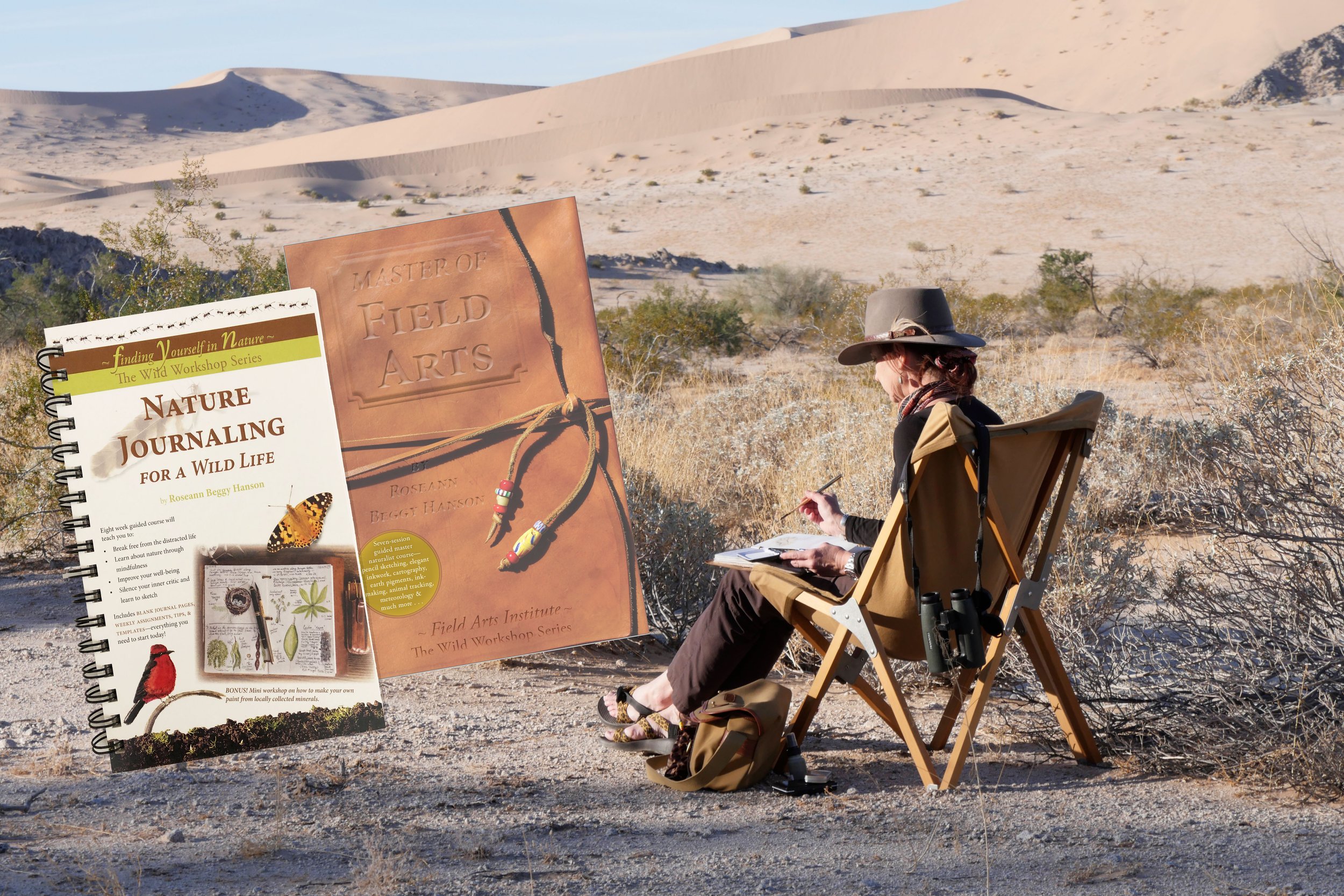One of the joys of field sketching in our nature journals are those moments when things just “click” and you love your notes, your sketches, the harmony of the page . . . and then . . . there are the times it just feels like a struggle.
These pages from a recent trip to a wildlife area in southeastern Arizona—an agricultural “wetlands” (it’s artificial) called Whitewater Draw—were the latter.
It was a beautiful day, and like most of the people visiting, we were there to see the Sandhill Cranes, which overwinter in the surrounding valley in the tens of thousands. I was looking forward to some great practice live-sketching birds—and ones that are mostly stationary, my favorite kind!
It was crowded, which is always a challenge to me whilst sketching. But the main challenge was just that my initial sketching felt stiff and difficult, a real struggle.
After a few moments I noticed a possible reason: the first bird I had chosen to sketch was facing to the right.
Thinking on it, I realized that I often find it really hard to sketch animals in that aspect. Going back over some of my other journal pages after I got home, I found many examples of live-sketching where the subject was facing right, and yes, those sketches were definitely a struggle. Hmmmmm…is this a real “thing?”
I did some preliminary research, and there was plenty of chatter on art forums of others who noticed the same thing . . . mostly beginners. So it’s not just me.
Thinking some more on this, I realized my crane sketch was the hardest, but the duck was easier—it started out hard, but then I quickly got it.
Why?
I now know why:
I was rushed when starting the crane drawing.
People all around, feeling “pressure” to get going, not taking my time.
And most important: I was drawing a bird. I should have been drawing shapes. By trying only to draw a bird, I was failing.
Look at the duck sketch. Much better and I did the overall shape really quickly and confidently. It just worked. Because:
I was drawing shapes, not a bird.
Going back to some of the art forum chatter, there are all sorts of theories about why some of us find it hard to sketch subjects facing right . . . one of the best theories was that if you are right-handed you have to draw the most important lines towards your palm, into it, and your fingers are cramped inwards—instead of the simple wrist motion to the side when drawing a left-slanted line.
I think it’s a combination of that plus the too-intent focus on the subject rather than shapes. With the duck I proved if you are just drawing shapes, you can overcome that cramped tendency by loosening up and drawing the shapes in a wrist-motion rather than obsessing on a beak or an eye.
Lesson from the Field: take your time to think about the act of sketching and consciously look for shapes rather than obsessing on the subject itself. Those few extra moments—maybe even just one minute—to find the shapes and talk yourself through them as you sketch will make it so much easier to be successful.











